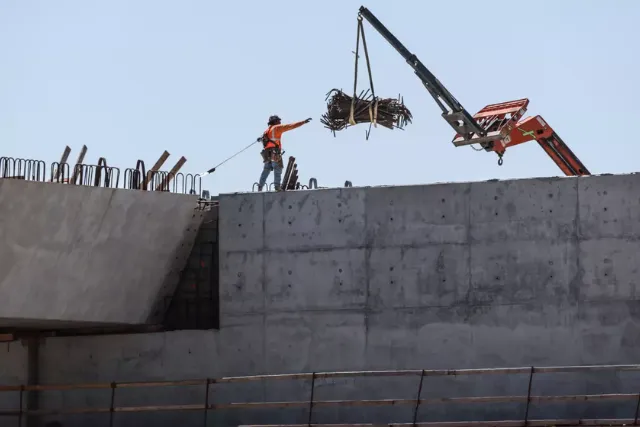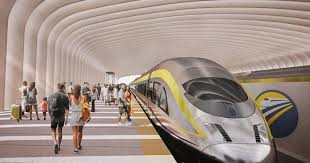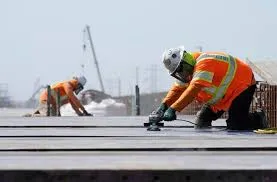
After a months-long review, the Trump administration has pulled $4 billion in federal funding from California’s high-speed rail project, citing “no viable path” forward for the Central Valley segment.

In a letter to the project’s CEO Ian Choudri, acting Federal Railroad Administrator Drew Feeley confirmed the FRA’s decision to cancel the funding commitment. Transportation Secretary Sean Duffy also directed the FRA to review additional grants and said the Department of Justice may pursue recovering more money.
Governor Gavin Newsom slammed the move as “illegal,” vowing to fight back.
“Trump wants to hand China the future and abandon the Central Valley. We won’t let him,” Newsom said Wednesday. “With projects like the Texas high-speed rail failing to take off, we are miles ahead of others. We’re now in the track-laying phase and building America’s only high-speed rail. California is putting all options on the table to fight this illegal action.”
Choudri echoed that the rail authority’s funding agreements are binding. “The funding commitments were ‘legally binding agreements’ and we have met our obligations,” he said.
Duffy placed the blame squarely on California leaders for what he called a “boondoggle.”

“Governor Newsom and the complicit Democrats have enabled this waste for years. Federal dollars are not a blank check — they come with a promise to deliver results,” Duffy said. “After over a decade of failures, [the California High-Speed Rail Authority’s] mismanagement and incompetence has proven it cannot build its train to nowhere on time or on budget. It’s time for this boondoggle to die.”
He doubled down on social media, posting that California is “the definition of government incompetence and possibly corruption.” Newsom fired back: “I won’t be taking advice from the guy who can’t keep planes in the sky.”
Former President Trump also celebrated the decision: “I am thrilled to announce that I have officially freed you from funding California’s disastrously overpriced ‘high speed train to nowhere,’” Trump posted. “The railroad we were promised still does not exist, and never will. This project was severely overpriced, overregulated and never delivered.”
The high-speed rail, originally projected at $33 billion and scheduled for completion by 2020, is now decades behind and could exceed $100 billion. Construction remains focused in the Central Valley with no completed segments connecting Los Angeles to San Francisco.
The administration’s June compliance review found the project riddled with budget overruns, missed deadlines and questionable ridership projections. Choudri pushed back in letters to the FRA, saying its findings were outdated and misleading.
“The Federal Railroad Administration’s ‘flawed inputs have led to flawed outputs,’” Choudri wrote, arguing the agency ignored current data in favor of “incomplete and flawed analyses.”
Despite the cut, California’s high-speed rail authority and lawmakers are working on private-public partnerships and state funding to keep the project alive. The state proposes adding $1 billion annually, pointing to thousands of construction jobs and economic boosts for Central Valley communities.
California’s high-speed rail has long been seen as a test case for large-scale green infrastructure in the U.S. — and now, its future may hinge on legal battles and new private capital.
Experts say the funding fight highlights a broader national divide over climate investment, transportation modernization and the future of large federal-state partnerships.
Meanwhile, other states are watching closely. If California’s project can survive this clash, it may shape how other regions pursue high-speed rail lines amid competing political and economic pressures.
Originally reported by Colleen Shalby in LA Times.